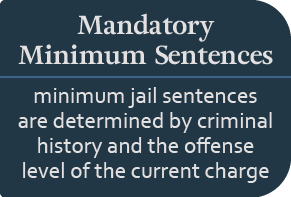Criminal Sentencing
Upon the conclusion of a criminal court trial, the jury will have rendered one of two possible verdicts: guilty or not guilty. If the defendant is found not guilty, then the case is dismissed and the defendant is free to go. If, on the other hand, the jury finds the defendant guilty, it then becomes the judge’s responsibility to impose a sentence.
Sentences can range in severity depending on the nature of the crime and any prior criminal history on the defendant’s record. A sentence might include probation, community service, a monetary fine, or incarceration. Sentences can also require mandatory participation in a rehabilitation program, if the charges include drug or alcohol abuse. Many sentences are multi-faceted and include some combination of all these elements.
Mandatory minimum sentences
Depending on the jurisdiction in which the case has been tried—that is, a state or federal court system—the judge may be required to adhere to a minimum sentencing guideline. All federal courts abide by the U.S. Sentencing Guidelines, which were established by the U.S. Sentencing Commission in an attempt to maintain uniformity between sentences rendered for similar crimes.
Mandatory minimum sentencing practices have come under great scrutiny in recent years, with opponents arguing that the minimum sentencing guidelines erode judges’ ability to consider individual case factors and deliver a punishment that fits the crime.


